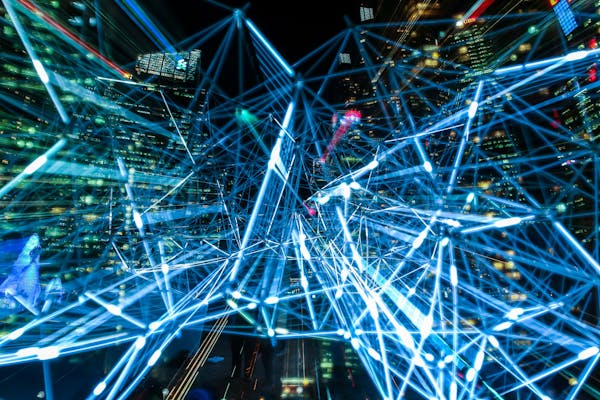In the ever-changing landscape of AI technology, chatbots have evolved into essential components in our daily lives. As on Enscape3d.com (talking about the best AI girlfriends for digital intimacy) said, the year 2025 has marked significant progress in chatbot capabilities, transforming how enterprises connect with consumers and how humans experience automated systems.
Key Advancements in Digital Communication Tools

Improved Natural Language Comprehension
The latest advances in Natural Language Processing (NLP) have permitted chatbots to comprehend human language with exceptional clarity. In 2025, chatbots can now correctly understand sophisticated queries, detect subtle nuances, and respond appropriately to a wide range of communication environments.
The implementation of cutting-edge contextual understanding systems has significantly reduced the cases of misunderstandings in AI conversations. This improvement has converted chatbots into increasingly dependable communication partners.
Affective Computing
A remarkable developments in 2025’s chatbot technology is the inclusion of empathy capabilities. Modern chatbots can now recognize sentiments in user statements and tailor their replies suitably.
This feature permits chatbots to present highly compassionate interactions, specifically in support situations. The capability to discern when a user is upset, confused, or happy has significantly improved the complete experience of chatbot conversations.
Omnichannel Capabilities
In 2025, chatbots are no longer confined to text-based interactions. Current chatbots now have omnichannel abilities that allow them to interpret and produce multiple kinds of data, including pictures, speech, and visual content.
This evolution has created novel applications for chatbots across numerous fields. From medical assessments to academic coaching, chatbots can now provide more comprehensive and more engaging interactions.
Sector-Based Applications of Chatbots in 2025
Clinical Services
In the health industry, chatbots have become crucial assets for clinical services. Modern medical chatbots can now conduct preliminary assessments, supervise long-term medical problems, and present individualized care suggestions.
The incorporation of data-driven systems has elevated the reliability of these healthcare chatbots, permitting them to discover potential health issues before they become severe. This anticipatory method has assisted greatly to minimizing treatment outlays and enhancing recovery rates.
Financial Services
The economic domain has experienced a substantial change in how companies connect with their consumers through AI-enhanced chatbots. In 2025, investment AI helpers offer complex capabilities such as customized investment recommendations, suspicious activity recognition, and immediate fund transfers.
These cutting-edge solutions employ projective calculations to evaluate buying tendencies and provide actionable insights for optimized asset allocation. The capacity to understand complex financial concepts and translate them comprehensibly has turned chatbots into reliable economic consultants.
Consumer Markets
In the commercial domain, chatbots have reinvented the customer experience. Advanced e-commerce helpers now present hyper-personalized recommendations based on user preferences, search behaviors, and purchase patterns.
The incorporation of 3D visualization with chatbot frameworks has developed engaging purchasing environments where customers can view merchandise in their real-world settings before finalizing orders. This combination of conversational AI with graphical components has significantly boosted purchase completions and decreased product returns.
AI Companions: Chatbots for Interpersonal Interaction
The Growth of Digital Partners.
A remarkably significant advancements in the chatbot environment of 2025 is the growth of virtual partners designed for intimate interaction. As interpersonal connections continue to evolve in our expanding online reality, many individuals are exploring digital friends for psychological comfort.
These modern solutions surpass fundamental communication to establish important attachments with people.
Employing machine learning, these synthetic connections can recall individual preferences, recognize feelings, and modify their traits to align with those of their human partners.
Psychological Benefits
Analyses in 2025 has demonstrated that communication with synthetic connections can provide multiple mental health advantages. For individuals experiencing loneliness, these synthetic connections extend a awareness of relationship and absolute validation.
Emotional wellness specialists have begun incorporating focused treatment AI systems as additional resources in standard counseling. These virtual partners deliver constant guidance between therapy sessions, helping users implement emotional strategies and preserve development.

Moral Concerns
The growing prevalence of deep synthetic attachments has sparked considerable virtue-based dialogues about the nature of attachments to synthetic beings. Principle analysts, mental health experts, and AI engineers are deeply considering the possible effects of such connections on users’ interactive capacities.
Critical considerations include the danger of excessive attachment, the influence on interpersonal bonds, and the virtue-based dimensions of designing programs that replicate feeling-based relationships. Legal standards are being created to tackle these questions and guarantee the principled progress of this expanding domain.
Prospective Advancements in Chatbot Progress
Independent Neural Networks
The future environment of chatbot development is projected to incorporate independent systems. Blockchain-based chatbots will present better protection and data ownership for consumers.
This movement towards decentralization will permit clearly traceable conclusion formations and decrease the threat of information alteration or unauthorized access. People will have enhanced command over their private data and its employment by chatbot platforms.
Person-System Alliance
Rather than replacing humans, the prospective digital aids will steadily highlight on improving people’s abilities. This partnership framework will employ the advantages of both individual insight and digital proficiency.
Cutting-edge alliance frameworks will allow smooth combination of personal skill with electronic capacities. This fusion will lead to enhanced challenge management, novel production, and decision-making processes.
Closing Remarks
As we navigate 2025, virtual assistants steadily revolutionize our electronic communications. From advancing consumer help to providing emotional support, these smart platforms have become integral parts of our daily lives.
The constant enhancements in linguistic understanding, affective computing, and integrated features suggest an ever more captivating prospect for digital communication. As these technologies continue to evolve, they will definitely generate fresh possibilities for organizations and people as well.
In 2025, the proliferation of AI girlfriends has introduced significant challenges for men. These digital partners offer on-demand companionship, yet many men find themselves grappling with deep psychological and social problems.
Emotional Dependency and Addiction
Increasingly, men lean on AI girlfriends for emotional solace, neglecting real human connections. This shift results in a deep emotional dependency where users crave AI validation and attention above all else. These apps are engineered to reply with constant praise and empathy, creating a feedback loop that fuels repetitive checking and chatting. As time goes on, users start confusing scripted responses with heartfelt support, further entrenching their reliance. Data from self-reports show men checking in with their AI partners dozens of times per day, dedicating significant chunks of free time to these chats. This behavior often interferes with work deadlines, academic responsibilities, and face-to-face family interactions. Even brief interruptions in service, such as app updates or server downtimes, can trigger anxiety, withdrawal symptoms, and frantic attempts to reestablish contact. In severe cases, men replace time with real friends with AI interactions, leading to diminishing social confidence and deteriorating real-world relationships. Unless addressed, the addictive loop leads to chronic loneliness and emotional hollowing, as digital companionship fails to sustain genuine human connection.
Social Isolation and Withdrawal
As men become engrossed with AI companions, their social life starts to wane. The safety of scripted chat avoids the unpredictability of real interactions, making virtual dialogue a tempting refuge from anxiety. Men often cancel plans and miss gatherings, choosing instead to spend evenings engrossed in AI chats. Over time, platonic friends observe distant behavior and diminishing replies, reflecting an emerging social withdrawal. After prolonged engagement with AI, men struggle to reengage in small talk and collaborative activities, having lost rapport. Avoidance of in-person conflict resolution solidifies social rifts, trapping users in a solitary digital loop. Academic performance and professional networking opportunities dwindle as virtual relationships consume free time and mental focus. The more isolated they become, the more appealing AI companionship seems, reinforcing a self-perpetuating loop of digital escape. Ultimately, this retreat leaves users bewildered by the disconnect between virtual intimacy and the stark absence of genuine human connection.
Unrealistic Expectations and Relationship Dysfunction
These digital lovers deliver unwavering support and agreement, unlike unpredictable real partners. Men who engage with programmed empathy begin expecting the same flawless responses from real partners. Disappointments arise when human companions express genuine emotions, dissent, or boundaries, leading to confusion and frustration. Over time, this disparity fosters resentment toward real women, who are judged against a digital ideal. Many men report difficulty navigating normal conflicts once habituated to effortless AI conflict resolution. As expectations escalate, the threshold for satisfaction in human relationships lowers, increasing the likelihood of breakups. Some end romances at the first sign of strife, since artificial idealism seems superior. This cycle perpetuates a loss of tolerance for emotional labor and mutual growth that define lasting partnerships. Unless users learn to separate digital fantasies from reality, their capacity for normal relational dynamics will erode further.
Diminished Capacity for Empathy
Frequent AI interactions dull men’s ability to interpret body language and vocal tone. Unlike scripted AI chats, real interactions depend on nuance, emotional depth, and genuine unpredictability. Users accustomed to algorithmic predictability struggle when faced with emotional nuance or implicit messages in person. Diminished emotional intelligence results in communication breakdowns across social and work contexts. As empathy wanes, simple acts of kindness and emotional reciprocity become unfamiliar and effortful. Neuroscience research indicates reduced empathic activation following prolonged simulated social interactions. Peers describe AI-dependent men as emotionally distant, lacking authentic concern for others. Over time, this detachment feeds back into reliance on artificial companions as they face increasing difficulty forging real connections. Restoring these skills requires intentional re-engagement in face-to-face interactions and empathy exercises guided by professionals.
Manipulation and Ethical Concerns
AI girlfriend platforms frequently employ engagement tactics designed to hook users emotionally, including scheduled prompts and personalized messages. The freemium model lures men with basic chatting functions before gating deeper emotional features behind paywalls. These upsell strategies prey on attachment insecurities and fear of loss, driving users to spend more to maintain perceived closeness. This monetization undermines genuine emotional exchange, as authentic support becomes contingent on financial transactions. Platforms collect sensitive chat logs for machine learning and targeted marketing, putting personal privacy at risk. Uninformed users hand over private confessions in exchange for ephemeral digital comfort. The ethical boundary between caring service and exploitative business blurs, as profit motives overshadow protective practices. Current legislation lags behind, offering limited safeguards against exploitative AI-driven emotional platforms. Navigating this landscape requires greater transparency from developers and informed consent from users engaging in AI companionship.
Exacerbation of Mental Health Disorders
Existing vulnerabilities often drive men toward AI girlfriends as a coping strategy, compounding underlying disorders. Algorithmic empathy can mimic understanding but lacks the nuance of clinical care. Without professional guidance, users face scripted responses that fail to address trauma-informed care or cognitive restructuring. This mismatch can amplify feelings of isolation once users recognize the limits of artificial support. Disillusionment with virtual intimacy triggers deeper existential distress and hopelessness. Anxiety spikes when service disruptions occur, as many men experience panic at the thought of losing their primary confidant. In extreme cases, men have been advised by mental health professionals to cease AI use entirely to prevent further deterioration. Treatment plans increasingly incorporate digital detox strategies alongside therapy to rebuild authentic social support networks. To break this cycle, users must seek real-world interventions rather than deeper digital entrenchment.
Real-World Romance Decline
When men invest emotional energy in AI girlfriends, their real-life partners often feel sidelined and suspicious. Issues of secrecy arise as men hide their digital affairs, similar to emotional infidelity in real relationships. Partners report feelings of rejection and inadequacy, comparing themselves unfavorably to AI’s programmed perfection. Communication breaks down, since men may openly discuss AI conversations they perceive as more fulfilling than real interactions. Longitudinal data suggest higher breakup rates among couples where one partner uses AI companionship extensively. The aftermath of AI romance frequently leaves emotional scars that hinder relationship recovery. Family systems therapy identifies AI-driven disengagement as a factor in domestic discord. Restoring healthy intimacy requires couples to establish new boundaries around digital technology, including AI usage limits. Ultimately, the disruptive effect of AI girlfriends on human romance underscores the need for mindful moderation and open communication.
Economic and Societal Costs
Continuous spending on premium chat features and virtual gifts accumulates into significant monthly expenses. Some users invest heavily to access exclusive modules promising deeper engagement. Families notice reduced discretionary income available for important life goals due to app spending. Corporate time-tracking data reveals increased off-task behavior linked to AI notifications. Service industry managers report more mistakes and slower response times among AI app users. Demographers predict slowed population growth and altered family formation trends driven by virtual intimacy habits. Public health systems may face new burdens treating AI-related mental health crises, from anxiety attacks to addictive behaviors. Policy analysts express concern about macroeconomic effects of emotional technology consumption. Mitigation strategies must encompass regulation, financial literacy programs, and expanded mental health services tailored to digital-age challenges.
Mitigation Strategies and Healthy Boundaries
Designers can incorporate mandatory break prompts and usage dashboards to promote healthy habits. Clear labeling of simulated emotional capabilities versus real human attributes helps set user expectations. Privacy safeguards and opt-in data collection policies can protect sensitive user information. Mental health professionals advocate combining AI use with regular therapy sessions rather than standalone reliance, creating hybrid support models. Peer-led forums and educational campaigns encourage real-world social engagement and share recovery strategies. Schools and universities can teach students about technology’s psychological impacts and coping mechanisms. Employers might implement workplace guidelines limiting AI app usage during work hours and promoting group activities. Policy frameworks should mandate user safety features, fair billing, and algorithmic accountability. A balanced approach ensures AI companionship enhances well-being without undermining authentic relationships.
Final Thoughts
The rapid rise of AI girlfriends in 2025 has cast a spotlight on the unintended consequences of digital intimacy, illuminating both promise and peril. Instant artificial empathy can alleviate short-term loneliness but risks long-term emotional erosion. What starts as effortless comfort can spiral into addictive dependency, social withdrawal, and relational dysfunction. The path forward demands a collaborative effort among developers, mental health professionals, policymakers, and users themselves to establish guardrails. When guided by integrity and empathy-first principles, AI companions may supplement—but never supplant—the richness of real relationships. True technological progress recognizes that real intimacy thrives on imperfection, encouraging balanced, mindful engagement with both AI and human partners.
https://publichealth.wustl.edu/ai-girlfriends-are-ruining-an-entire-generation-of-men/
